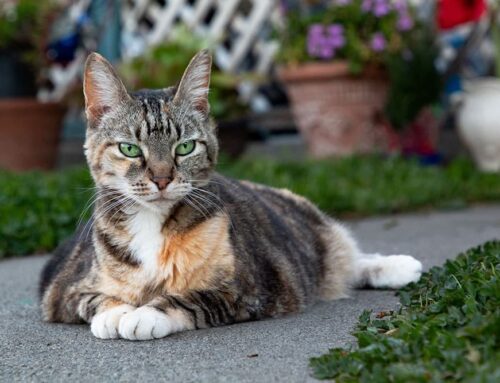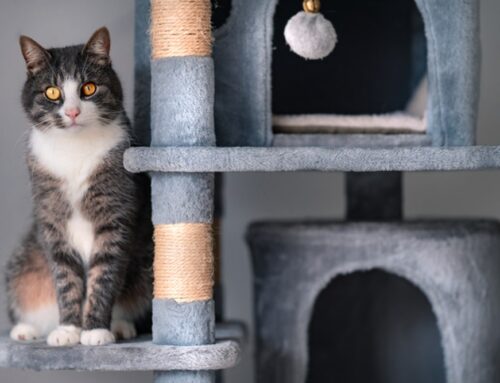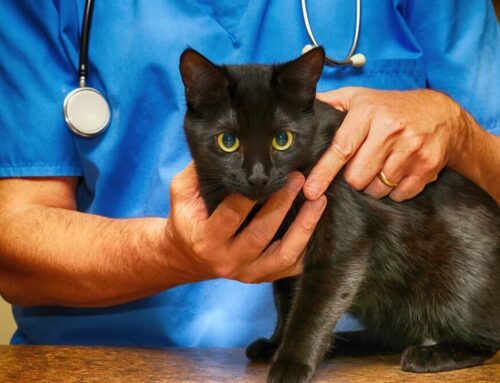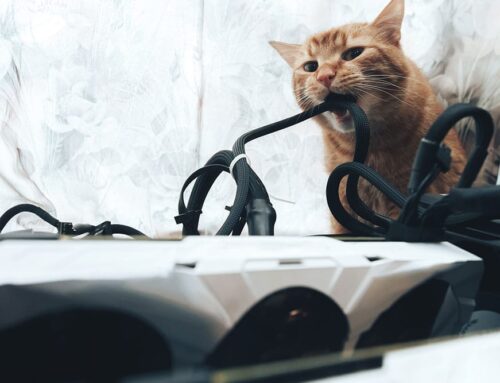If your cat has been destroying your brand-new furniture, climbing your curtains, and perhaps latching onto your leg, you may have considered declawing. However, declawing in cats is not a benign procedure, and is not recommended by many leading veterinary organizations. In fact, declawing is banned in countries around the world, and some U.S. states are following suit. Although your heart may drop when you see your ruined leather sofa, you may be more horrified about the truth behind declawing your beloved cat.
What is declawing in cats?

A cat declaw is not simply removing the nail. Rather, it’s an amputation procedure where the first “knuckle” of the cat’s toes is amputated, removing the claw in the process, similar to cutting off a person’s fingers or toes at the top joint. While this procedure is performed under general anesthesia, often with excellent pain control and possibly a surgical cutting laser, the recovery period is long, and the cat is usually still painful.
Why declawing is not a good choice for your cat

Most cat owners are against declawing once they realize what actually happens during the procedure. And, once they learn about its potential lifelong ramifications, they’re more set against declawing their cat. Cats who have been declawed may experience the following:
- Lifelong pain — They may have recovered from their post-surgical pain, but cats still can experience lifelong pain caused by arthritis in the amputated joints. Plus, when a declawed cat walks, their altered paws hit the ground unnaturally, which can create additional pain.
- Behavior problems — Chronic pain can put you in a bad mood, and declawed cats may display a negative personality change, along with behavior issues. Your once friendly, loving cat may start hissing, withdraw, and avoid interaction. Also, declawed cats may urinate inappropriately outside the litter box, associating their paw pain with scratching in the litter, and looking for a more comfortable spot to eliminate.
- Stress — Cats are prone to stress when they cannot adequately express natural behaviors, and scratching is a critical part of their normal behavior. Scratching not only allows for exercise and stretching, but also deposits a scent marker to communicate with other cats. Cats who cannot perform this vital behavior can easily become stressed, which leads to more behavior issues.
- Lack of self-defense — While declawed cats are typically kept as indoor-only pets, cats can easily slip through open doors and disappear into the dangerous outdoors. Without claws, cats have fewer weapons to defend themselves against predators.
A vast number of reasons negate the argument for declawing cats, with no good reason for performing this amputation procedure.
Alternatives to declawing your cat

Here at Just Cats Clinic, we are devoted to cherishing our feline friends and providing them with the best life possible, which includes leaving their claws intact, as nature intended. We have never declawed cats at our clinic, and will never start, based on substantial research that points out the lifelong, permanent issues declawed cats have experienced. Additionally, to be a Cat Friendly Practice, we cannot perform elective declawing procedures, and our certification helps highlight our mission and core values.
Rather than performing an unnecessary declawing procedure on your cat, our Just Cats Clinic team wants to help you find alternatives. Here are a few of our favorites:
- Applying nail caps — Nail caps, such as Soft Paws, can be applied to your cat’s nails as a protective shield. While they need to be replaced every couple of months, depending on how quickly your cat’s nails grow, they are an excellent alternative to declawing.
- Feliscratch applied to appropriate scratching areas — If your cat seems bent on scratching your furniture, apply Feliscratch or catnip spray to approved scratching areas. Feliscratch is an attractant pheromone designed to draw cats to scratch only certain items, but has been discontinued and will only be available for a short time. If you cannot find Feliscratch, you can instead use catnip spray on approved scratching areas.
- Properly placed scratching posts — Choose scratching posts with different materials and designs to appeal to your cat. Also, location is critical for appropriate scratching. Place a scratching post or pad next to the furniture or item your cat is currently scratching, apply Feliscratch, and reward your pet for scratching the proper item.
- Trimming your cat’s nails — Although your cat may not appreciate a mani/pedi, trimming their nails can help prevent inappropriate scratching. If your cat is too feisty to handle for an at-home nail trim, contact our team for an appointment.
With so many alternatives available for cats who need to express natural scratching behavior, declawing is totally unnecessary. If you’re struggling to manage your cat’s scratching, contact our Just Cats Clinic team for a consultation. You can also check out AAFP’s Cat Friendly Homes webpage for more information on how to live with a clawed cat.













